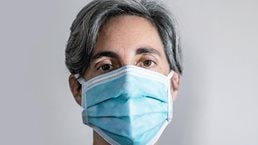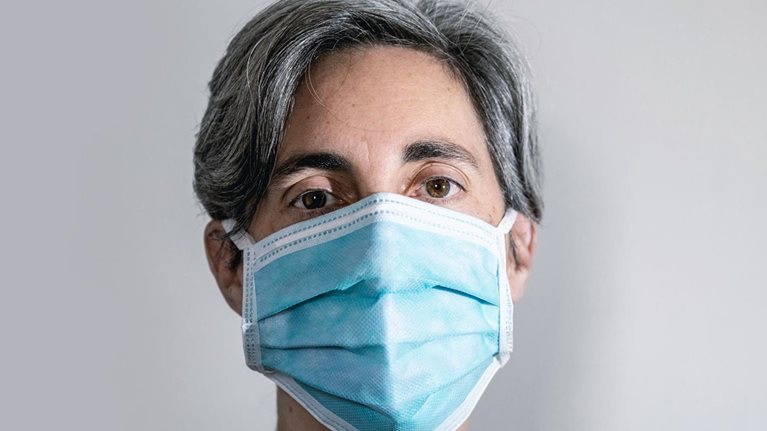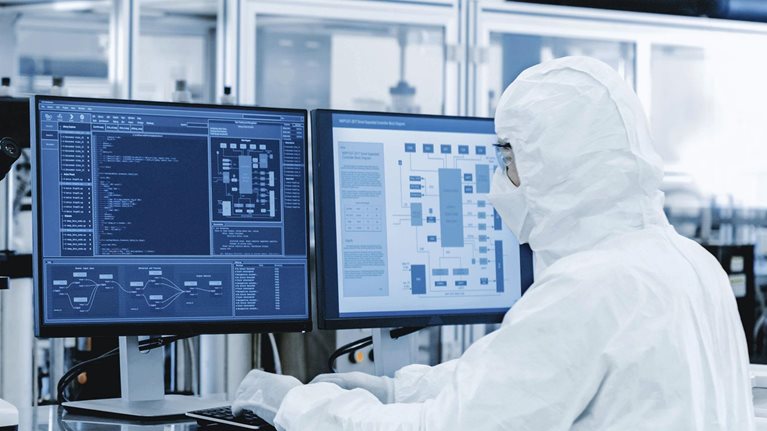Some might argue that leaders of operations in the pharmaceutical industry have been historically slow to respond to changing times. During the COVID-19 pandemic, however, many across the industry have been highly responsive. Industry operations leaders have rallied to enable the supply of key medicines across borders, manage workforce safety, and handle evolving government restrictions all while beginning to prepare for new vaccines and therapeutics. And most companies have put crisis-response command centers in place to appropriately manage and bring stability to an otherwise unstable time.
With these initiatives established, companies can begin taking stock of what lies ahead. Given the shifts that have taken place seemingly overnight in response to the immediate crisis, companies are also turning their attention to recovery and the path to the next normal. This will likely bring about fundamental changes in pharma operations. While individual companies will drive many of these changes, some will be driven industry-wide, and external factors, including government’s involvement, will also have impact on shaping the post-COVID-19 recovery (Exhibit 1).

At the industry level, for example, network strategy has evolved. Landed costs are no longer the key metric as the focus shifts to the cost implications of location risk. As the pandemic has reinforced, supply chains can be at significant risk when there is over-reliance on a location that may be vulnerable to disruption. Shifting production locations so that production is closer to end markets or in lower-risk countries that are less subject to disruption are now routine considerations in risk mitigation.
Supply chains are also becoming more patient-centric due to the increased adoption of digital tools, telehealth, and app-based ecosystems. New technologies are expected to also emerge, such as mRNA-based vaccines, that may alter the market dynamics for capacity.
At the individual company level, companies are now more focused on operational resilience and accelerating initiatives that enable more agility—including workforce agility as workforces become more remote and distributed—and transparency through greater deployment of digital and analytics tools and automation.
As the recovery begins to shape, there are considerations for governments and regulators as well. This is likely to evolve as the industry itself evolves in its recovery from the crisis.
Each of these shifts—at the industry, company, and government level—will have fundamental implications for pharma operations and its path to recovery.
Recovery and the next normal: Company perspective
In the path to recovery, COVID-19 has increased the focus on risk management as companies reassess their supply-chain strategies and footprints to make them more agile and resilient to disruption. This also includes the potential for disruptions to the workforce as changes in design and operating models will drive redistribution of talent and new skill sets.
Reorganizing assets and supply chains will create more resilience. In the aftermath of COVID-19, the intense focus on risk management across networks and supply chains will likely continue, despite the inevitable increased costs.
Companies should consider reevaluating their strategies, risk tolerance, and overall network footprint to address these risks. Their considerations may include how much excess capacity they will need, dual sourcing, and geographic diversification. Make versus buy decisions will also be impacted and will be dependent on the way companies evaluate their contract development and manufacturing organizations (CDMOs), such as weighing solvency risks, the amount of control they want to have, the need to choose partners based on diversifying locations and other considerations that balance cost versus risk.
These shifts may have fundamental implications for contract manufacturing as companies reevaluate their strategy, supply chain, and distribution networks. There may also be growth in the demand for last-mile production/postponement and a gradual shift away from global supply chains to self-sufficient local supply chains. These changes may require sourcing strategies to evolve as there will be areas of limited supply in the short term—in categories such as sterile fill/finish and logistics/air freight—and fundamental changes in the long term as contract manufacturing organizations and supplier industries change and potentially consolidate. To adapt to this evolution, more agile and strategic procurement organizations may emerge.
Digital and analytics tools and automation will be the engines that accelerate agility and transparency. The demands on risk mitigation will drive companies to seek more transparency across the value chain and create more agile operating models. In the shift, companies will rely even more on digital- and analytics-led solutions. For example, if international transparency on stocks of essential (and possibly all) medications and medical supplies become the norm, digital will play an essential role. Distributors and drug manufacturers may also begin to collaborate to create better stock visibility and improve forecasting.
Automating manufacturing processes and warehouses will also play an important role in the future, increasing data availability and, more importantly, decreasing a reliance on manpower. “Lights out” fully automated facilities will also reduce the risk of future disruptions due to infectious disease. Digital tools will also enable some key business processes—such as auditing or product release—to be done remotely, potentially decreasing the risk of disruption while improving efficiencies
Agility, especially in product transfers and new material validation, will become distinctive features of a resilient strategy. More traditional pharmaceutical processes will shift to agile models that allow for expediting processes for future emergencies. These may include simplified medical-equipment approval, quality and risk-assessment processes for new material qualification and validation, remote monitoring for site quality audits, and more rapid adoption of electronic batch records.
As the future of work becomes more remote and distributed, demand may shift to new capabilities and talent. Reevaluating the future of work will be a key focus for most industries and pharmaceutical operations will be no exception. As overall network costs come under scrutiny driven by increased costs elsewhere, traditional organizations may come under pressure, driving changes in design and operating models and resulting in a significant redistribution of talent. For example, there may be less focus on requirements to work on site—and the post-COVID-19 workforce will be more at ease working remotely. This workforce agility will in turn enable leaner, more flexible, and well-distributed organizations.
The post-COVID-19 workforce and organization will also likely adopt new, more efficient ways of working. Out of necessity, organizations have stopped a great deal of relatively low-value work during the COVID-19 slowdown, developing ways to be more efficient and productive. Organizations focused on retaining and building on these new efficiencies will do well when work resumes.
Within operations functions, new capabilities will also be needed as the workforce shifts from manual skills to more technical skills. As the adoption of digital and analytics tools and automation increases, pharmaceutical-operations organizations may have a greater need for talent that can program, operate, and interpret data from these new technologies. This will require significant up-skilling and capability-building efforts alongside ongoing strategic planning.
Recovery and the next normal: Implications for the industry
At an industry-level, the changes will likely be more sweeping with more focus on network optimization, patient-centricity, and new demands on capacity and efficiency.
New networks will balance total cost and risk. Network optimization in the industry has recently been focused on total landed costs, but the new optimal state will place more consideration on balancing cost with risk. This will result in fundamental shifts in what the industry footprint will look like. There has long been an underlying sense of unease in the industry as core centers of supply are located far from their demand. The COVID-19 crisis has reinforced this unease and forced companies to consider moving a portion of last-mile production-supply capacity closer to end markets.
Additionally, companies should consider reassessing today’s global supply hubs, with special attention paid to higher-risk areas. To further mitigate risk, companies may also consider creating excess capacity in the global network to enable flexibility, increasing the extent of dual sourcing, diversifying their partner portfolios, and/or adopting near-shoring or local-for-local strategies. This shift may result in increased industry-wide capacity and investment in some markets or product types.
Would you like to learn more about our Life Sciences Practice?
Investors in current supply hubs may provide this supply capacity by shifting their investments. Local manufacturers in Europe and the United States may also choose to invest in capacity. Additionally, there could be a significant growth in last-mile production across the industry.
For small-molecule drugs and manufacturing, the trend of creating excess capacity in particular could impact final dosage form more than active-pharmaceutical-ingredient (API) manufacturing as labor arbitrage is higher for API manufacturing than finished-goods manufacturing. Scalable economics for API manufacturing will also be more difficult to reach for some markets.
Biologics manufacturing is comparatively more geographically diverse, so this trend may have less of an impact in this space. However, this may be an important factor when deciding where to locate new investments, such as in sterile fill/finish capacity.
Supply chains will become patient-centric with different end points of delivery and information. As the increased adoption of digital tools, telehealth, and app-based ecosystems make patient-level data more available, patient-centric supply chains should consider how to serve this demand. In a recent survey of physicians, significant increases in telemedicine, video-conferencing, remote-working tools, and clinical-decision-support tools are all expected (Exhibit 2).

Customers and patients will expect increased supply-chain transparency and information, and this move to telehealth and app-based ecosystems will require a tech-enabled delivery model. The digitization of supply chains will accelerate, and investors may step in to further disrupt and reform supply chains.
Pharmaceutical-distributor and pharmacy models could also be fundamentally disrupted, and customer-acquisition costs may change by an order of magnitude. This could lead to differentiated business-delivery models that find new sources of relevance in the market (such as strategic reserves of pandemic inventory) and also drive new partnerships to scale a more patient-centric delivery model.
New technologies will emerge and shift the overall industry. mRNA technology has rapidly accelerated as several of the COVID-19 vaccine candidates are mRNA-based. In an April 2020 McKinsey survey on the impact of COVID-19 to date, four out of five of top pharmas surveyed predicted a significant increase in demand for lyophilisation, as well as for mRNA and other technologies.1 The industry may look for novel ways to rapidly increase this capacity as well as repurpose existing capacity. This may have significant implications if companies redistribute capacity to products with higher landing costs.
The same could also be said for traditional biologics-drug-substance capacity, some of which may be repurposed from traditional mAB production to produce new technologies and products to support COVID-19 response. There may also be a wider adoption of continuous manufacturing technologies, which requires less space, less upfront investment and creates flexibility in potentially enabling more local production.
Operations organizations should consider adapting quickly in the path to the next normal. As individual actions in the pharmaceutical industry stack up, change will be inevitable for the industry. Operations organizations would need to consider quickly adapting as the industry the evolves to include both the traditional players as well as the new entrants, who have come to stay. The market could also see more vertical integration and joint ventures.
Recovery and the next normal: The role of government
The industry is at a crossroads and change is inevitable. How the industry responds, both to the immediate crisis and in the path to the next normal will affect decisions at the government level.
Key stakeholders in the recovery will include governments and regulators who have become more involved in crisis decisions and response. In a recent survey of top pharma companies, four out of the five respondents reported an increase in government involvement in key markets.2 One example in the United States is the Food and Drug Administration’s recently announced Coronavirus Treatment Acceleration Program (CTAP), which aims to better support companies and scientists looking to field trials as well as helping to expeditiously qualify new treatments for use.3 Similar actions from other governments have been seen across the world.

COVID-19 and commercial pharma: Navigating an uneven recovery
The respective actions in the next few weeks and months will determine the future of government involvement and regulations. So far, the industry has come together like never before, with increased collaboration industry-wide to ensure product supply. For example, a wide group of pharma companies have come forward with plans of ramping up the production of hydroxychloroquine in light of the increased demand for COVID-19 treatment coupled with export challenges from India.4 The European Medicines Agency has also seen pharmaceutical companies, who have been competitors, come together to secure critical, high-demand medicines for hospital intensive-care units by setting up the industry-single-point-of-contact (i-SPOC ) system, which enables close monitoring of possible disruptions in supply.5 This continued collaboration could change how governments and regulators play a role in oversight.
Intense public scrutiny, however, means governments and regulators could take a more proactive approach in a scenario where pharma companies may be perceived to be falling short. And increased regulatory attention could materialize in different ways: Governments could mandate higher minimum safety stocks for select products and start applying heavier penalties for stockouts. Or it could become mandatory for pharma companies to have flexible capacity for key drugs and medical products which would drive an even more focused wave of SKU standardization. Some governments may also become involved in private companies and push for stronger regulation on operators’ access to products.
Preparing for recovery
Given the many changes likely to unfold, operations leaders in the pharmaceutical industry have much to consider. The following questions can help prepare for the years ahead:
- What is your view on risk mitigation and what are the key decisions you will need to consider to execute your risk strategy?
- Is your organization considering changing its partnership strategy (such as with contract manufacturing organizations) or will it do more on its own?
- How diversified is your network in balancing landing costs versus risk? What is your point of view on the locations for specific supply points (such as India and the United States as supply points)?
- The industry cost curve will likely flatten in the move toward more transparency. What are the changes needed in your operations organization to improve transparency and agility in this scenario?
- As the increased adoption of digital tools, telehealth, and app-based ecosystems make patient-level data available, how will your organization adapt its operating model and who will be the driver of change?
- How will you budget for the additional cost buckets due to COVID-19 and what will be the order of magnitude of this impact—both on operating costs and on capital requirements?
- As you prepare to go back to work, what is your people strategy? What are the key capabilities you need to start building immediately as well as the talent you need to begin recruiting now?
- What role do you believe government will play in future supply and inventory needs and what are the implications for your supply-chain and manufacturing strategy?
COVID-19 is first and foremost a humanitarian crisis and the role played by pharmaceutical organizations is fundamentally critical. As pharma leaders focus on their crisis response, it is important to consider these questions and the implications for their respective companies in increasing resiliency and better adapting to the post-COVID-19 world.


